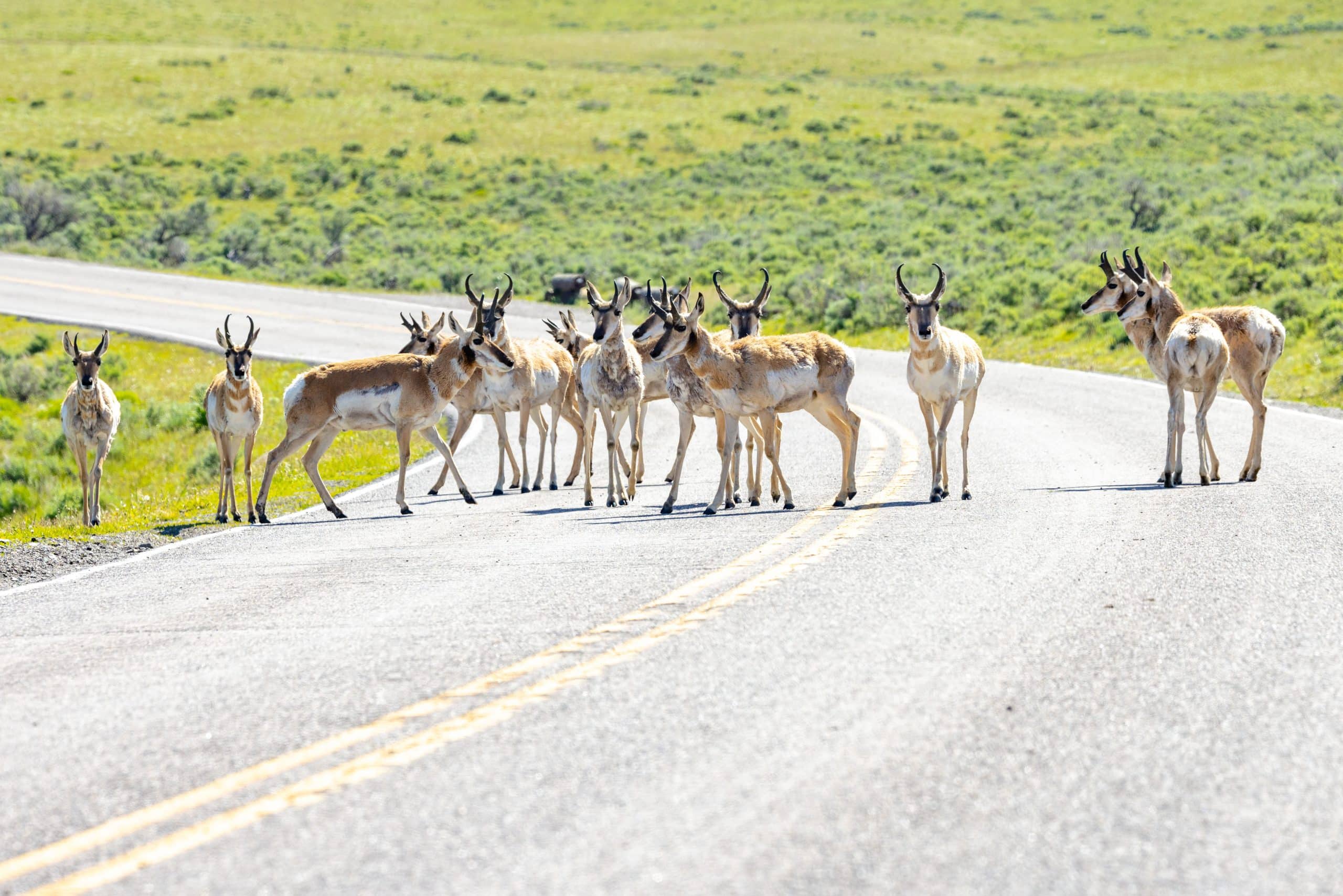USGS has published big game migration maps which are playing a critical role to support wildlife conservation efforts. The USGS in collaboration with state and tribal wildlife agencies, recently published the third volume in a series of new maps of big game migration corridors in December 2022. These maps are enabling relevant stakeholders like policy makers, land managers and so on to take appropriate actions to mitigate the impacts of land development on wildlife. The first two sets of maps published by the team were released in 2020 and early 2022.
The mapping details
The maps have provided a visual image of some big game travel routes bringing in deer, elk and pronghorn highways running throughout America’s western states. Individual animal trails may be discerned on the maps and the most interesting parts they reveal are the parts where those trails converge.
“Many ungulate herds must migrate to thrive on the strongly seasonal landscapes of the American West. These corridor maps make it possible to plan for keeping those corridors open,” said Matthew Kauffman, research wildlife biologist with the USGS Wyoming Cooperative Fish and Wildlife Research Unit and the report’s lead author at the USGS official national news release for this mapping update.
GPS collar data has helped the mapping team track the animal movement routes and been a great source of identifying trouble points like points of migration route overlap and existing as well as potential obstacles stalling the free migration of the animals.
This unique mapping exercise is being orchestrated by the Corridor Mapping Team who have been working to develop standard techniques to make migration maps accessible to the public. Since its inception in 2018, the Corridor Mapping Team has expanded to include participation from 11 US Western state wildlife-management agencies as well as from multiple tribal and federal agencies.
The migration routes and ranges can be explored at an interactive portal created for the same.
Enhanced conservation efforts
Western United States has a big population of ungulates (hooved mammals). Their presence is certainly a great component of the area’s biodiversity asset. Maintaining the predator–prey balance in the region’s ecosystem is a significant role indeed. Their presence also impacts vegetation cover as well as contributes to economic gains for the local communities by promoting tourism and hunting opportunities.
All these animals participate in seasonal migrations to access required resources which are variably distributed over their surrounding regions as well as in different times of the year. Every year during spring and fall, deer, elk, pronghorn and other hoofed mammals migrate throughout the western US to avoid heavy snow and access the most nutritious forage.
Seeking protection from predator threats as well as other threats are also a catalyst for such migration initiatives. However as the human footprint expands across the western United States, there is growing endangerment for these ungulates in migratory journeys.
Action plans from the mapping results
The mapping exercise has yielded results which have helped in implementing suitable action plans to promote wildlife conservation efforts. The migration maps have been a valuable reference point for state and tribal wildlife agencies to collaborate with respective transportation agencies to conceptualize and begin building wildlife underpasses and overpasses. This would look into the safety of the animals in being able to cross major road networks.
Related activities like displaying message boards and automatic systems along highways to alert drivers and crossing animals have also been initiated as the wildlife travel routes have become clear. The ease of travel for the wildlife is being kept in mind and fences on the route are being removed as well as recreation and tourism activities enveloping these travel routes are being customized to enable the wildlife migration to proceed smoothly.
Land development activities and related stakeholders are also receiving clarity to look into their plans and reduce as well as reorient housing development plans in the areas of concern. Sites of renewable energy projects are also being reconsidered based on these migration plans.
Location Intelligence is revolutionizing wildlife conservation
Location intelligence data captured in clearly depicted maps have been a highly effective tool in strengthening wildlife conservation in present times. Location intelligence information enable researchers in determining the location of animals, migration patterns, and even the social group of an animal. This effective tool is also used by conservationists to monitor and conserve animals in their natural habitat. These information provide rich insights in understanding various aspects of wildlife existence and in turn help the concerned stakeholders formulate appropriate conservation programs.
It is well recognized now that traditional wildlife approaches are insufficient as several wildlife habitat areas are physically impossible to reach and monitor. However, with the recent development of various uses of location intelligence techniques and their mapping outputs have streamlined conservation efforts to be much refined and efficient. In fact this technology has dramatically increased the possibility to access the outermost reaches of the natural world.
Geospatial technologies have today enhanced the preservation plans for animals and provides a great opportunity for the protection of biodiversity by shifting the field dynamics in favor of the wildlife species.









